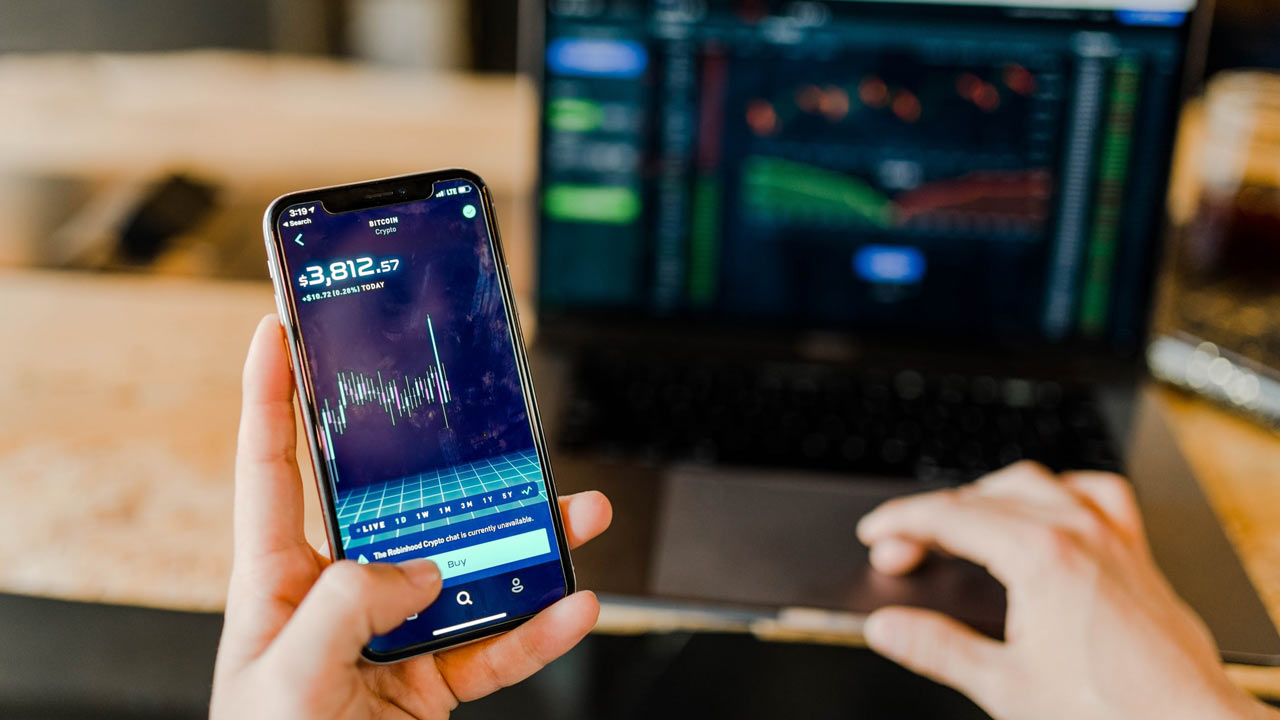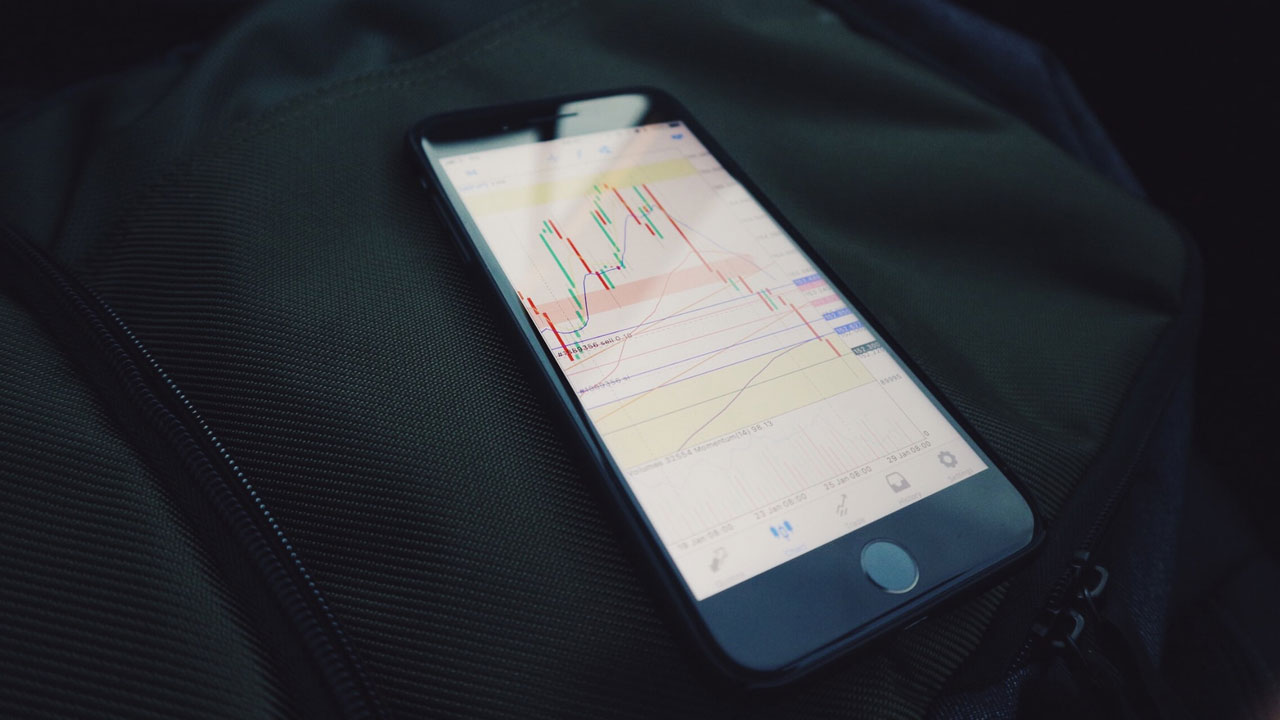Many people are flocking to trade in cryptocurrencies. If you’re a beginner in cryptocurrency trading, then you need to know what it entails, and this article will explain some of its fundamental characteristics to assist in this regard. We’ll be sharing tips to help inexperienced traders come to grips with some important concepts that are key to trading.
We’ll begin with the important distinction between trading and investing, before moving on to how trading is done in the day-to-day. Thereafter, some important points to keep in mind will be highlighted.
The Difference Between Trading and Investing In Cryptocurrency

Cryptocurrency trading is distinct from cryptocurrency investing in that they entail a differing mindset as well as different modes of research. While investing aims to create long term footholds in a cryptocurrency based on fundamental analysis and longer-term trends, trading aims for short term profit through technical analysis and short term trends.
What this means, then, is that cryptocurrency trading encourages more risk by buying low and then selling high when the market is favorable in the short term. Investing, by contrast, often forces users to HODL through downturns in the market if needed. Temporary fluctuations don’t matter as much because the idea is to stick around for longer periods of time.
A trader in cryptocurrency may care about the crypto in some fashion, but the short term price trends are what truly matter. Caring too much about cryptocurrencies could be detrimental due to the fact that coins are often dropped in the process of cryptocurrency trading. Therefore, the fundamentals of a cryptocurrency play a secondary role to its short term price trends.
In summary, trading seeks to increase gains more than coins in the short term. While one can do both trading and investing at the same time, these should not be confused. Traders need not necessarily build their positions over longer periods of time, as they thrive in the immediate fluctuations of the market.
Preliminaries Of Cryptocurrency Trading
The rest of this guide will spell out how to start your cryptocurrency trading journey, as well as some important things to keep in mind.
To begin, you’ll need to choose what kind of wallet to store your crypto on, as well as which exchange to trade on. While it is up to the particular user, beginners will benefit from joining an all-in-one exchange that provides a wallet, multiple ways of trading, and increased security, such as the popular Coinbase.
Coinbase does have limited types of altcoin to trade in, however. This is why more advanced traders may eventually move on to using other exchanges, such as Binance or Kraken, to access other currency types. Also, keep in mind that more than one exchange may be used at a time.
After you’ve been verified on the selected exchange and you’ve placed money into your account, both of which can take a few days, you’ll be able to trade in cryptocurrency. You can trade-in your cash for cryptos, as well as trade your crypto for other cryptos (once you’ve acquired some, and depending on the exchange).

Order Types
To start with your cryptocurrency trading, you will need to know what the different order types are. It’s imperative if you want to become more advanced, that you understand the difference between market orders, limit orders, and stops.
Market Orders
When placing a market order, the trader is attempting to buy or sell the cryptocurrency at the current market price. Whichever orders are on the “order book” are thus immediately sold. A trader can set a market buy or a market sell order.
Slippage can result when placing a market order, which is when you get higher prices with buy market orders or lower prices with sell market orders. This primarily happens when there aren’t enough orders to fill the market order at the given price.
Something to keep in mind is that the slippage can be substantial when the market is very volatile.
Limit Orders
Limit orders, by contrast, occur when a trader places an order hoping that the market order of another trader will fill it. A trader can set a limit buy called an “ask”, or a limit sell called a “bid”.
Market orders “fill” the limit orders. The basic idea here is that someone’s market order “fills” the limit order by buying or selling into them. Limit orders can have lower fees and aren’t affected by any slippage.
Stop Orders
A stop order occurs when a trader places a market order which only gets filled once a particular trading price has been met. A trader can set a stop buy order, which initiates the buying of a crypto once the price parameter has been met. Therefore, cryptos get bought at the chosen price or lower.
A stop sell order, or “stop loss”, initiates a sale in order to safeguard against further losses. If the market price of a crypto dips, the setting of a stop sell order parameter safeguards your assets.
Stop orders are also subject to similar fees as market orders and may also experience slippage.
Technical Analysis

How Is Technical Analysis Done?
In order to enact effective cryptocurrency trading, technical analysis is an important element of success. As stated in our guide on technical analysis, it’s used as a way of gaining insights into the history of a cryptocurrency when trading. This is used to assist in ascertaining the potential movement of cryptocurrencies into the market’s future.
By analyzing factors such as volume and market price, traders can use past and current real-world data to predict the future of whichever cryptocurrency is under review. This is primarily achieved by looking for trends and patterns within tools that display the information as analytic graphical charts.
To do technical analysis, the most-used analytical tool during cryptocurrency trading is the candlestick chart. Our guide on technical analysis details the most important elements of this analytical tool.
There are also a few techniques that are important to learn before using these graphical charts properly. For example, it is worth learning how to set a trend line, which follows the course of a cryptocurrency over a given time frame, as well as how to choose the time frame itself. Understanding the average price and following the trading volume of the cryptocurrencies are also highly pertinent, amongst others.
Technical Analysis Or Fundamental Analysis?
Technical analysis should not be confused with fundamental analysis, which is the practice of reviewing and evaluating the inherent value of whichever cryptocurrency is being traded. Instead, technical analysis assumes that cryptocurrency market prices incorporate all relevant factors, that cryptocurrencies follow price trends, and that these pricings and trends tend to repeat themselves.
When all is said and done, technical analysis focuses on the “what” of market fluctuations, as opposed to the “why”. This, in theory, frees up the trader to deal with the immediate market conditions and ignores potentially confounding variables.
Having said this, while technical analysis is the bread and butter of the cryptocurrency trading game, fundamental analysis can also play an important role in predicting the immediate trends of the market. Therefore, fundamental data on the cryptocurrencies, and even news or software updates, could have an immediate influence on the marketplace.

Some Things To Keep In Mind
When cryptocurrency trading, there are a few important things to keep in mind.
1. Firstly, the market is incredibly volatile, and newcomers must be careful in their analyses of the cryptocurrencies in which they want to trade. Learn to know when your actions are risky, and when they are overly conservative. The well-known coins are relatively safe, but many gains can be made with altcoins over a short space of time if you know what you’re doing (and are fortunate).
2. Another point worth noting is that the movement of cryptocurrencies into and out of accounts is taxable. This is on top of the fees which are payable during transactions, as well as other assorted fees. You need to keep these costs in mind when trading in order to have a handle on what you are making.
3. Furthermore, it is prudent to stay away from margin or derivatives trading at first. Only once you feel you understand the intricacies of these should they be attempted.
4. And finally, note that you needn’t buy entire coins, as the option to buy fractions of coins is available. This enables you to buy into expensive coins such as bitcoin, which means that you can hold more stable cryptoassets to hedge against the future.
At the end of the day, you are looking to retain cryptos that will increase in value over time.
Conclusion
This article has introduced cryptocurrency trading for the beginner. We explained the difference between trading and investing, along with how one can begin trading.
We also detailed how cryptocurrency trading is done and provided some important points of information for the cryptocurrency trader to keep in mind.
At the end of the day, cryptocurrency trading is a rewarding activity provided the user takes the time to learn its intricacies.
















